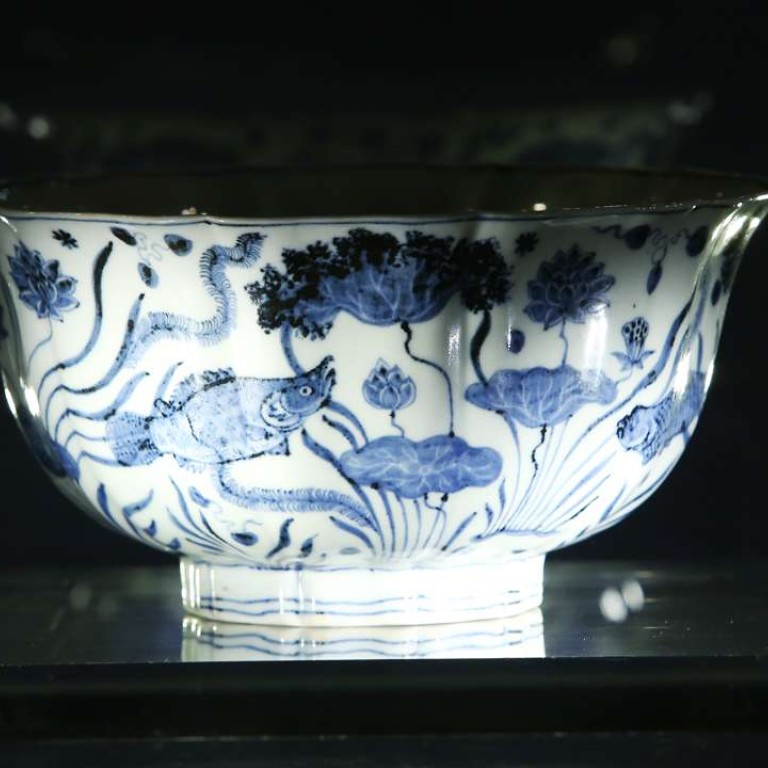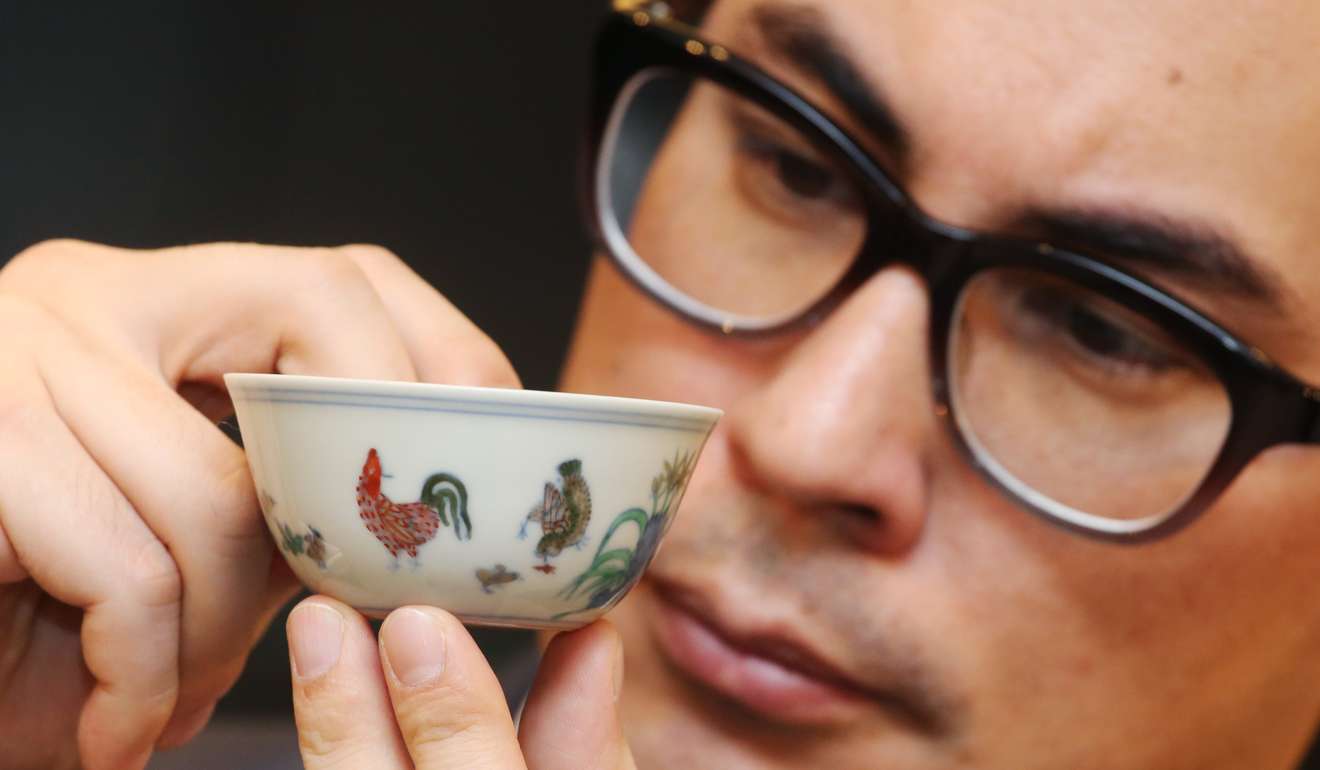
Chinese porcelain bowl sells in Hong Kong for HK$229 million, second highest price ever paid for Ming dynasty wares
Four bidders spark 12-minute tussle for blue and white bowl that’s one of very few with fish pond design favoured by early 15th century Emperor Xuande; a ‘chicken cup’ bought for US$36.2 million holds record for Ming porcelain
A blue and white porcelain bowl that’s nearly six hundred years old was sold for HK$229 million at a Sotheby’s auction in Hong Kong on Wednesday.
The price, which included fees charged by the auction house, was the second-highest price paid for a Ming-dynasty Chinese porcelain at auction and about twice the pre-sale estimate.
The tense bidding for the Xuande “fish pond” lobed bowl lasted around 12 minutes and was a tussle between four anonymous bidders on the phone and William Chak Kin-man, a local dealer, in the sales room.

Nicolas Chow, deputy chairman of Sotheby’s Asia and international head of its Chinese works of art department, said bidding was down to just two phone bidders after the HK$130 million mark and that the winner was a client of one of the auction house’s Taiwan specialists.
He said the bowl is among a few surviving examples with a design of fish swimming in a pond – one of Emperor Xuande’s favourite motifs. Dated from his reign between 1425 and 1435, the bowl was previously in a Japanese collection and had never appeared at auction before.
The record for the most expensive Ming porcelain piece ever sold is held by the Meiyintang Chenghua “chicken cup” that Chinese collector Liu Yiqian bought for HK$281.2 million in 2014.

